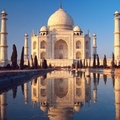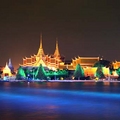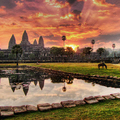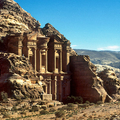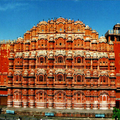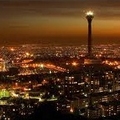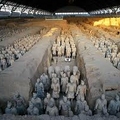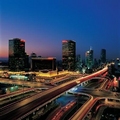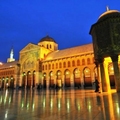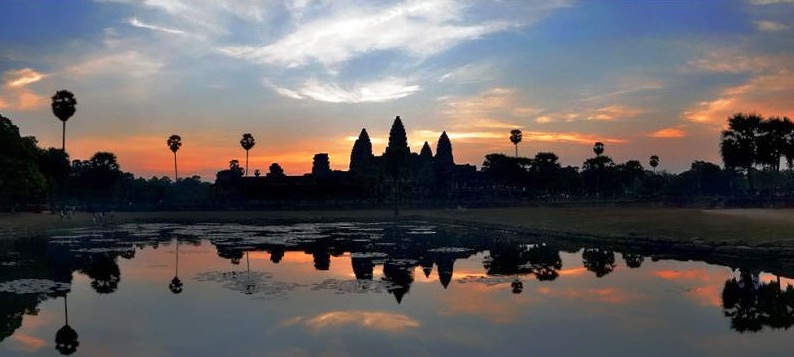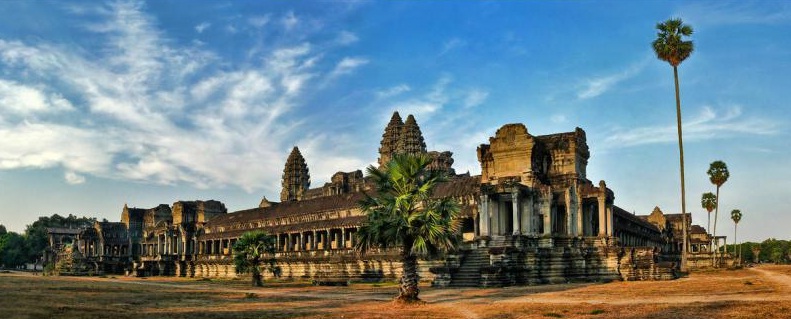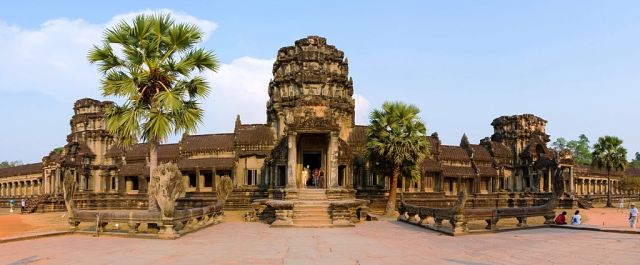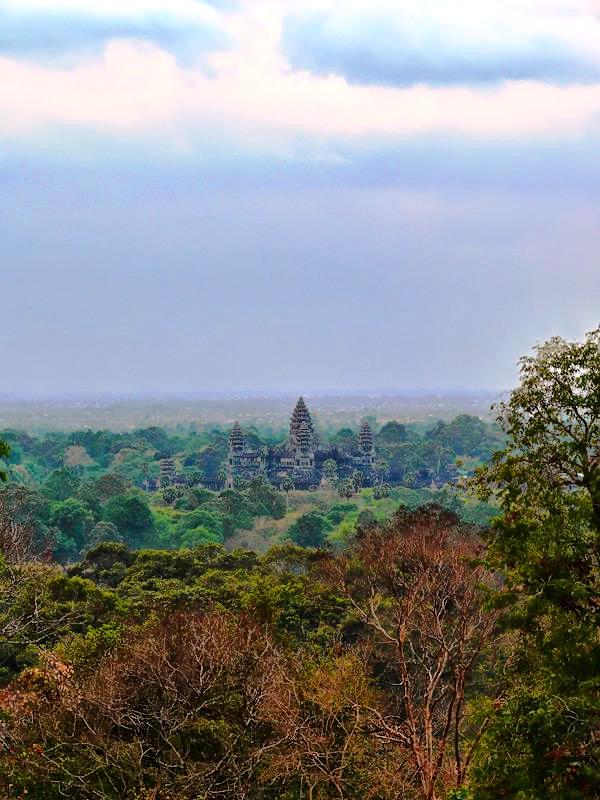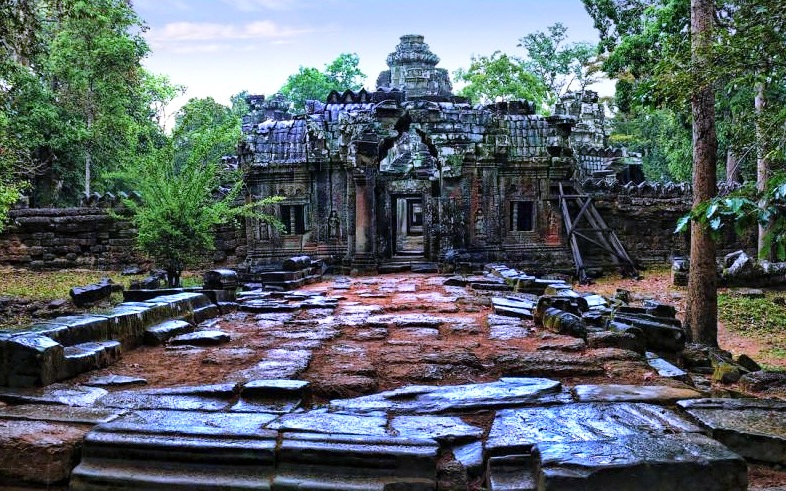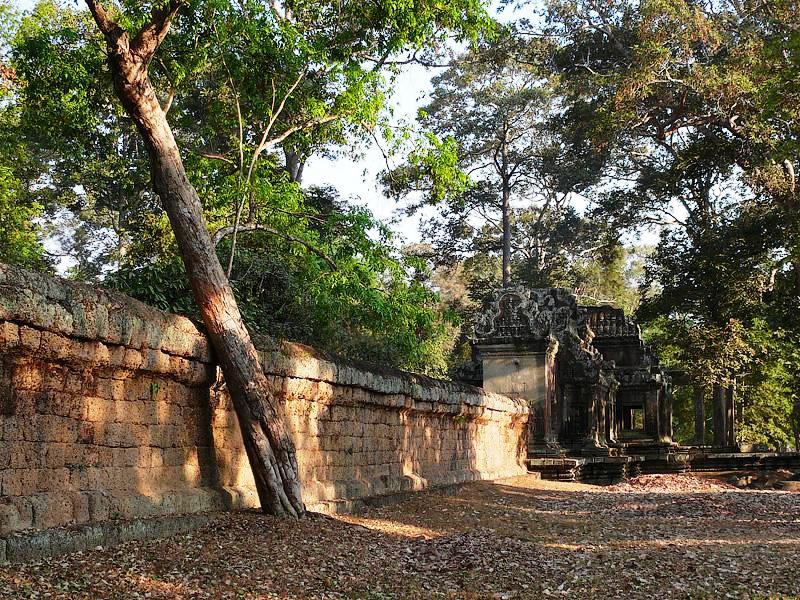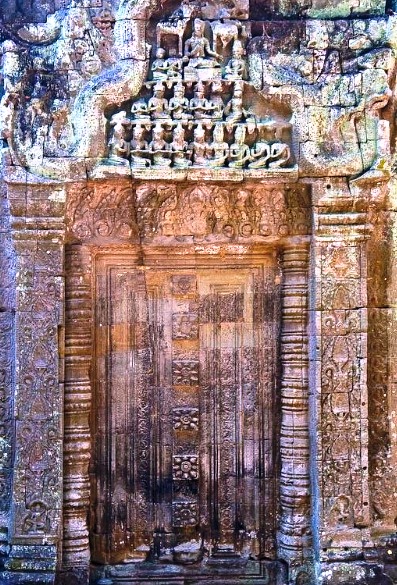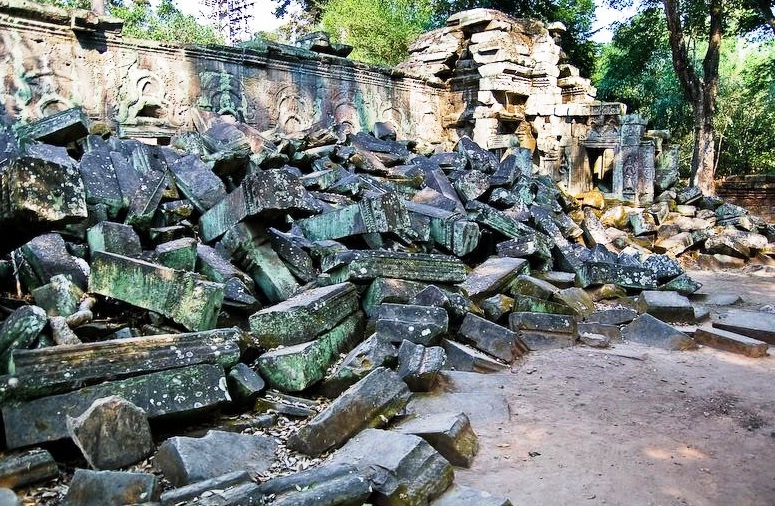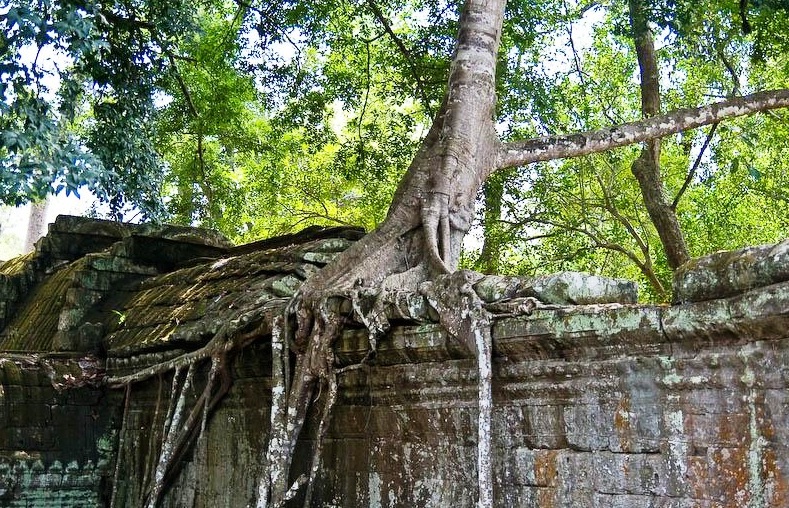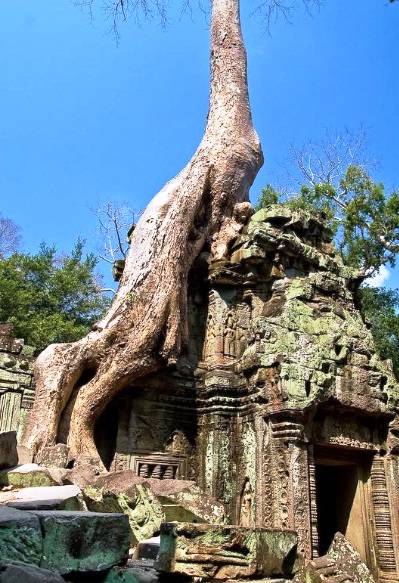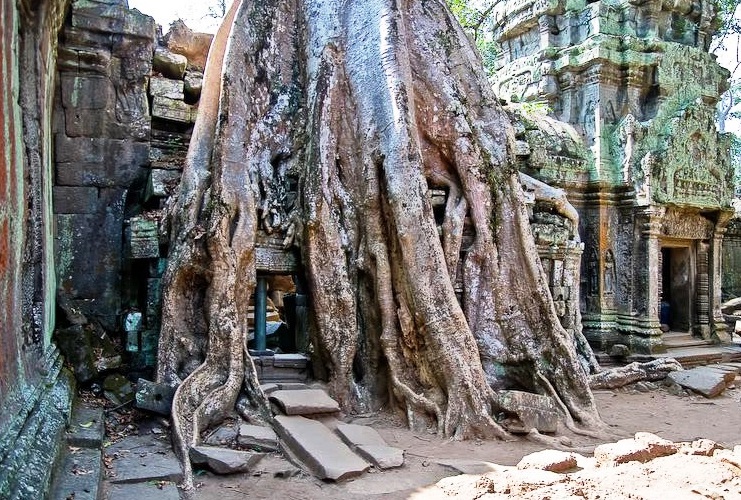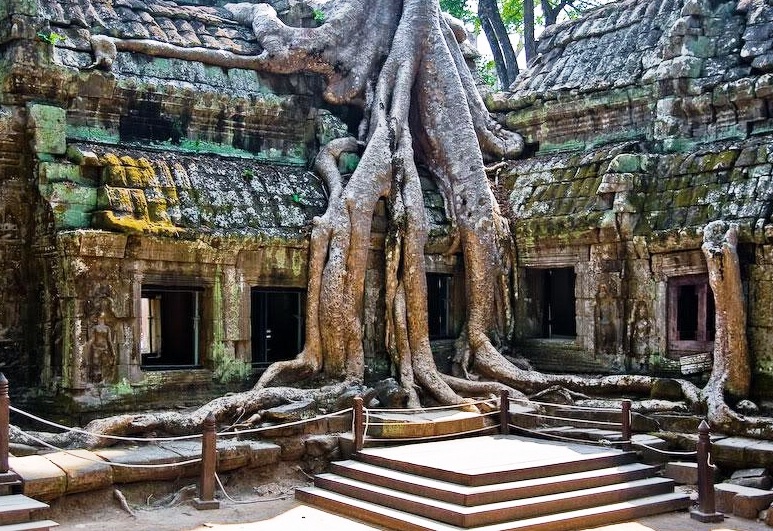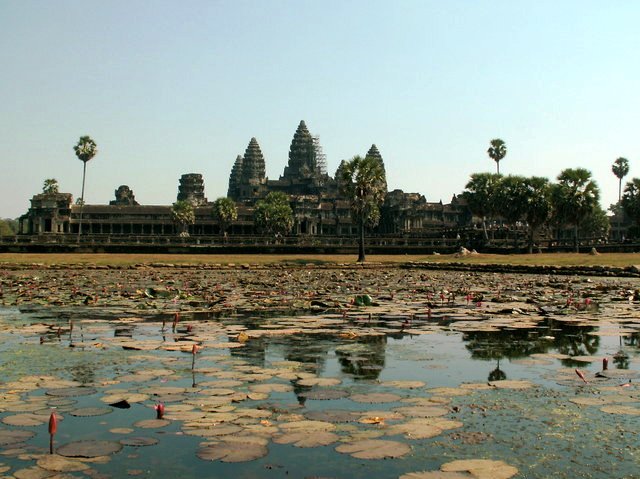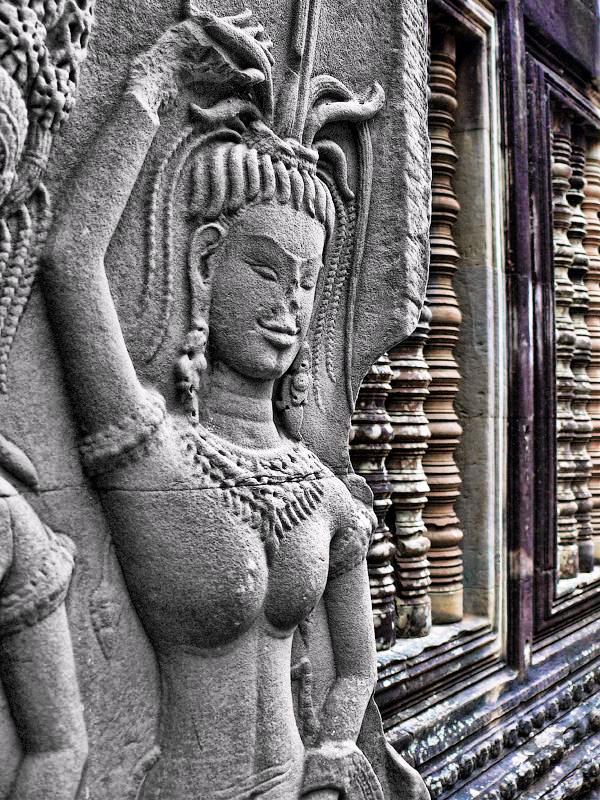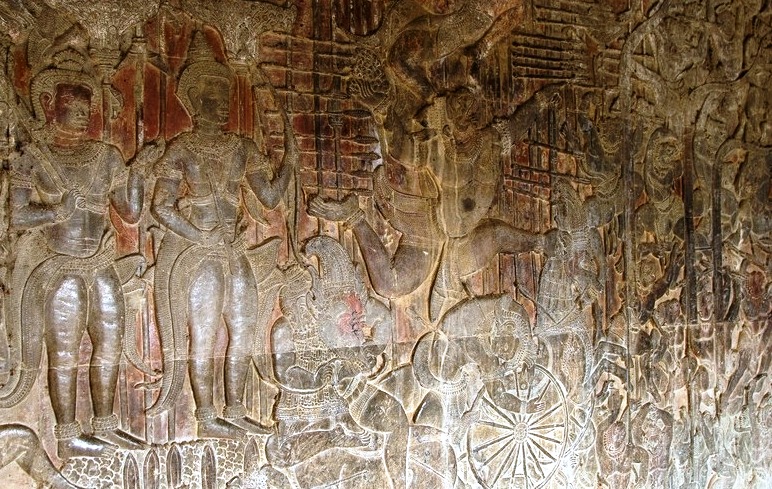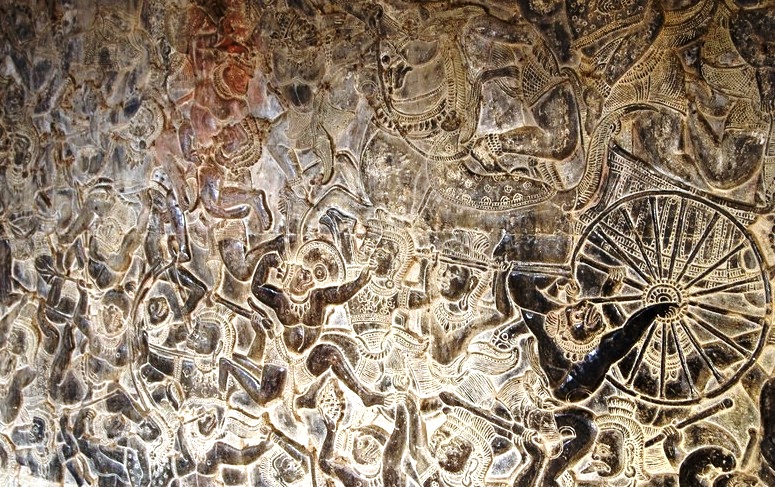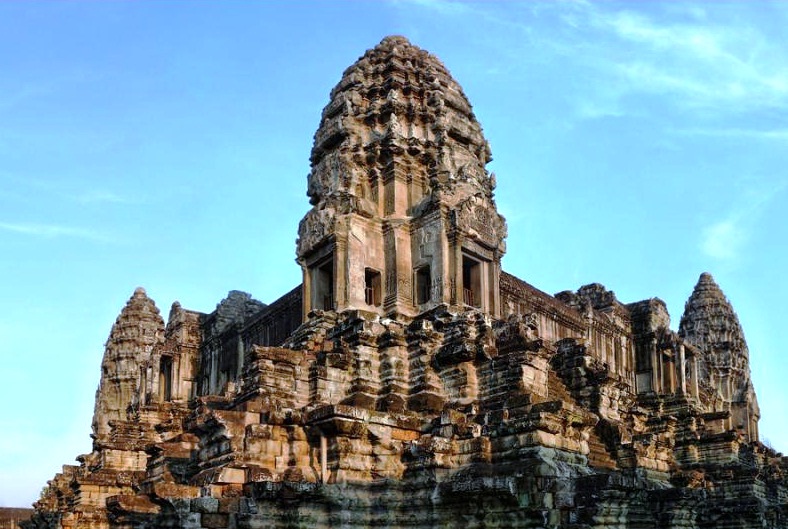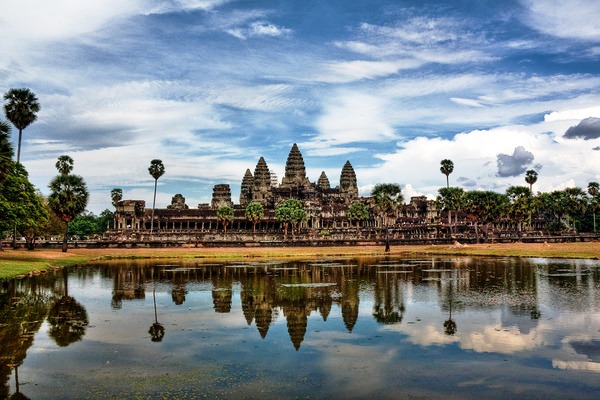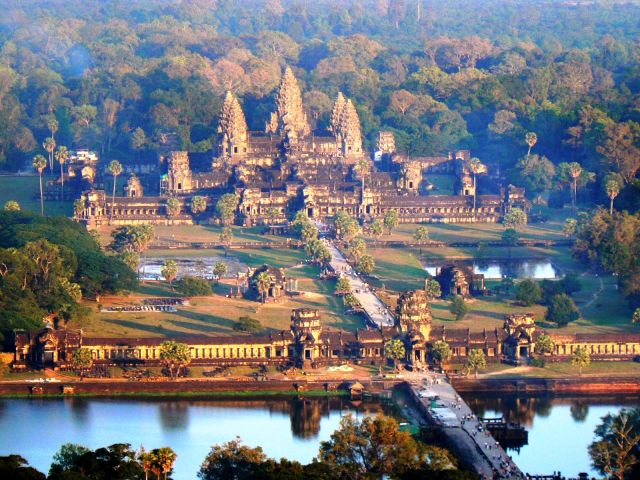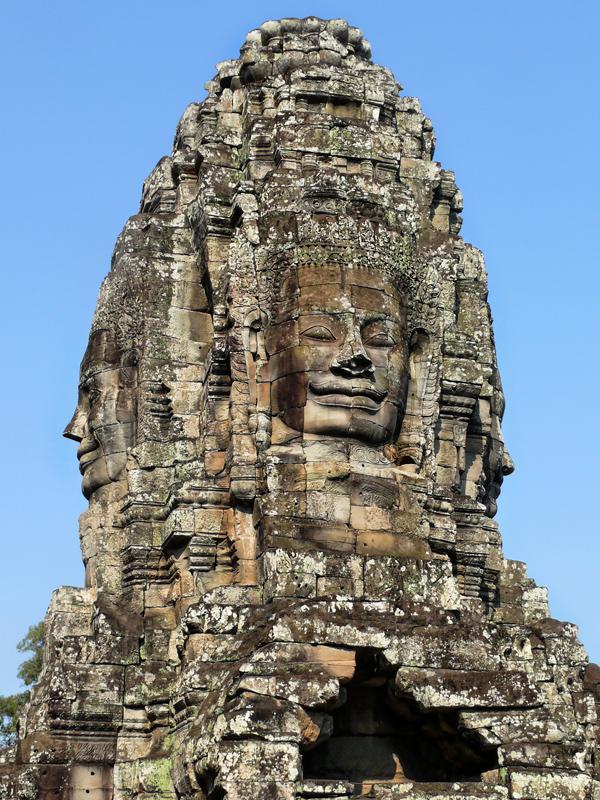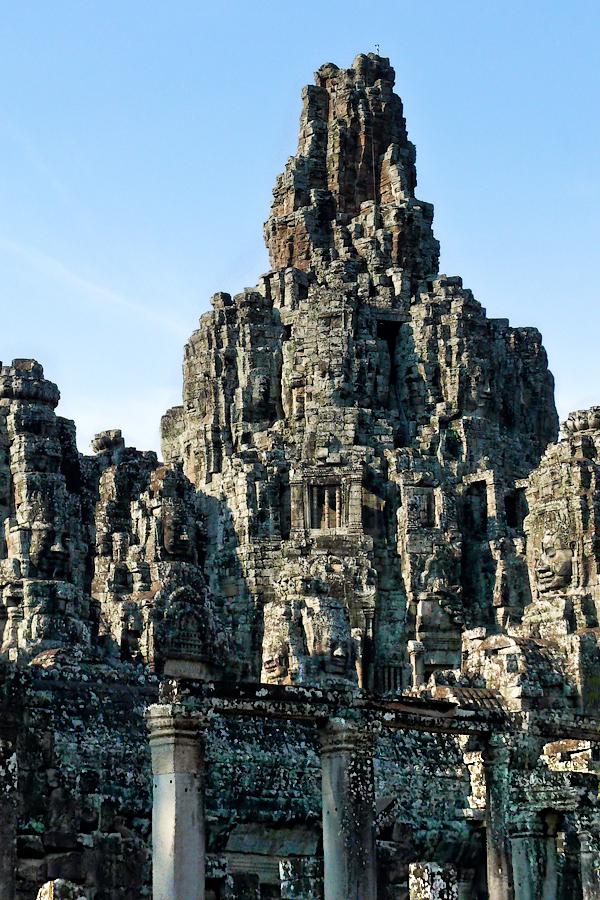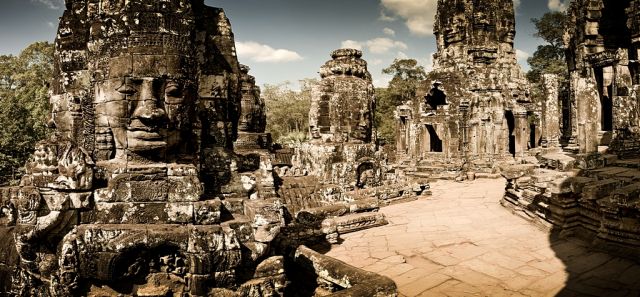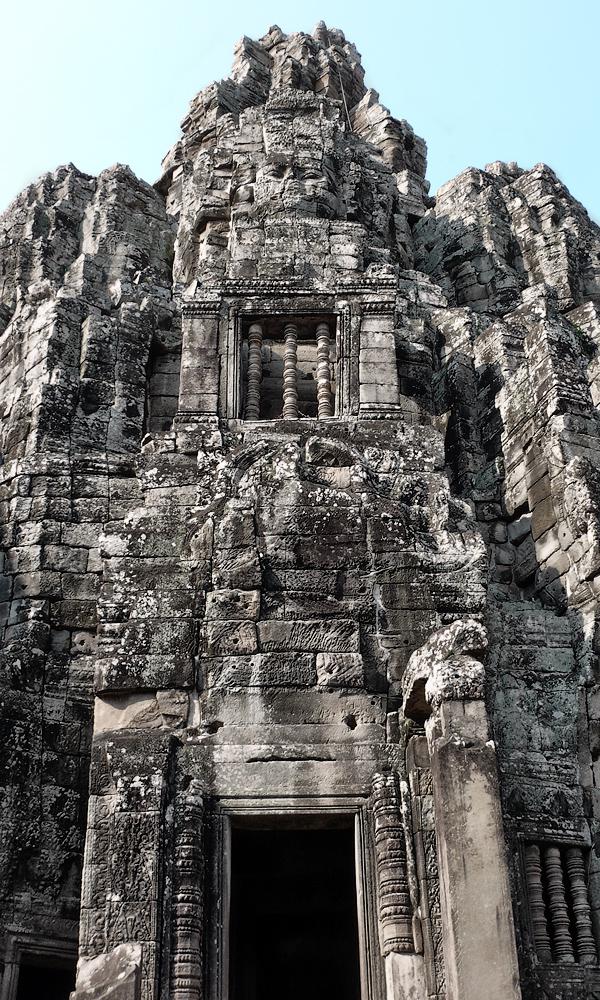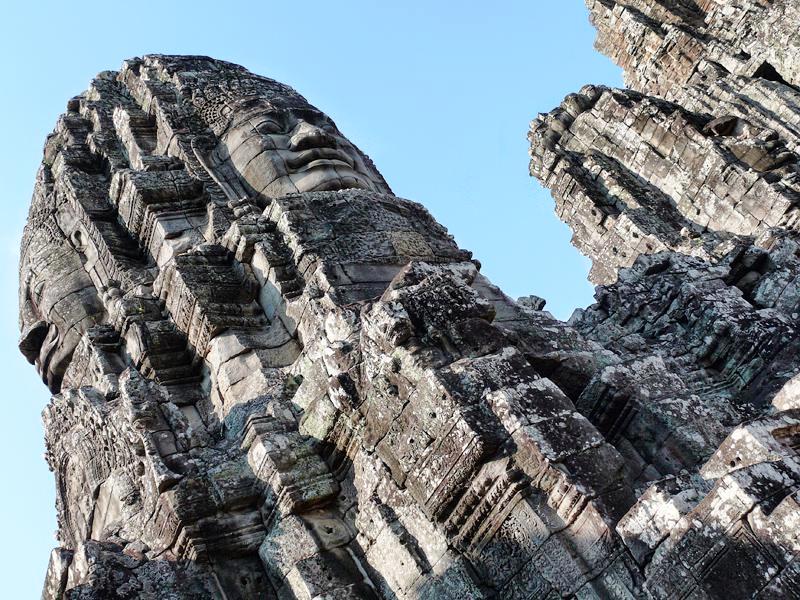Destinations / Top cultural destinations in Asia / Angkor Wat in Cambodia
Angkor Wat in Cambodia
Tradition, mystery, history, mysticism -these are the few things that one will find at the ruins of Angkor complex of temples, testimony to a turbulent history and a culture completely different from any other in the world. For the people of Khmer, Angkor means so much more than the remains of an empire, archaeological site or tourist attraction. Angkor reminds about what they are able to do and it is a symbol of Khmer independence, perhaps a symbol of hope. For this reason, the five towers of the largest of all temples, Angkor Wat, appear on the flag of Cambodia.
Angkor Wat is one of the most beautiful historical monuments in the world. Located about 192 miles northwest of Phnom Penh, the capital of Cambodia, the temple has preserved its traditions and customs almost unchanged. The complex is located near the town of Siem Reap, a lovely town, perhaps one of the most developed cities in Cambodia, due to the fact that more than one million visitors visit Angkor Wat each year. The tourists set their "headquarters" here because you will not manage to visit Angkor Wat in a few hours, often requiring two to three days to do that. Siem Reap has an international airport, connected to several Asian cities (Bangkok, Singapore, Hanoi, Seoul, Kuala Lumpur, Hong Kong), but the most important route is the Bangkok one, which brings every day numerous tourists from the Mecca of South Asia tourism, Thailand.
Known more as Angkor Wat, named after the largest temple in the complex, Angkor Archaeological Park is among the first reasons to visit Asia. Wonderful, intriguing and impressive is not enough to describe it. Not even pictures can describe the feeling that one gets when walking through the forest full of temples, mysterious building, where huge stone faces look at you, with symbols you find it hard to understand. Angkor is impressive both in size and decorations, as well as its construction and story behind it. You end up thinking about who used to walk on the narrow stone lanes, who climbed the stairs towards the sacred places or what sacrifices were made to build this place. Do not expect for the temples to be the same. You will encounter both Hindu symbols, of the god Vishnu, and Buddhist shrines. The Hindu temples evoke Mount Meru, the Hindu holy mountain, the dwelling of the gods, while the Buddhist temples are gallery-type temples. The explanation lies in the fact that the king Srindravarman decided to change the official religion of the Khmer empire from Hinduism to Buddhism in the 13th century. In order to visit the Angkor complex, it is required to have a means of transportation - you can rent anything, from bicycles, motorcycles to a limousine, yet with the exception of the bicycle, you will have to "rent" the driver as well; for a great experience, the best one would be the “tuk-tuk”.
For a long time, Angkor Wat was totally isolated due to of its location in the center of the country and dense jungle surrounding it. French settlers were the first Westerners to explore the place. Hearing all sorts of rumors about "temples built by gods or giants", most settlers thought they were just folk tales, yet there have been a few who believed that and have discovered “the lost city of the Cambodian empire". The first ones who discovered this wonder were French missionaries (1860). The botanist Henri Mouhot has initiated a detailed research and has developed a restoration project. Research continued until 1968, when the Vietnam war has stopped. Initially it was thought that the temple was not built by Cambodians, but by one of the nations that occupied this area 2000 years ago. His theory proved to be wrong, and intensive archaeological research enabled to "assemble" the history of Cambodia. It is currently known that Angkor Wat was the capital of the Red Khmer Empire (880-1225 AD). Its history begins in the tenth century, when Yasovarman I built the first royal temple at Angkor. Starting with the year of 802, with the coronation of Jayavarman II, Khmer Kingdom became one of the most important and influential countries of Asia. By the beginning of the twelfth century, during the rule of King Suryavarman II, the kingdom reached its peak in its development. This is also the time when the construction of the magnificent temple of Angkor Wat has begun, with its towers 65 feet high -a Hindu temple, built in honor of the god Vishnu. Apparently, construction works have stopped following the death of King Suryavarman and some of the reliefs were left uncompleted. In 1177, Angkor was attacked and looted by Cham Muslims, old enemies of Khmer. A few years later, the Khmers have won the war and returned triumphant in Angkor, under the rule of a new king, Jayavarman VII, who built a palace and a new temple, Angkor Thom, respectively Bayon, a few miles away from Angkor Wat. By that time, Angkor was more than just a region of temples –it was the largest urban center, stretching on more than 1,500 square kilometers.
In a short time, the Khmer empire would enter a period of decline that has lasted over 200 years. In 1431, Angkor was invaded by the Siamese who sacked the city and killed a large number of Khmers. The Khmer Empire has not recovered, and Angkor was abandoned. Once a great fluorishing city, today only temple ruins are left. Although there were located many houses and palaces around the temples, it was impossible for them to resist in time, as stone houses were built only for gods, while people, even kings, were sheltered in wooden settlements. Surprisingly, Angkor was little affected during 30 years of bloody civil war. Red Khmers -an organization of left orientation- have waged a guerrilla struggle against the government of Prince Sihanouk. In 1975, many Buddhist monks who lived in the Angkor area, along with Buddhist population, have been massacred as a result of "social reorganization". Yet the temple has not been structurally affected. Nowadays, archaeologists from around the world are involved in the restoration process. Much of the history of the "Lost City" still remains a mystery.
The main temple, Cambodia's undeniable symbol (a stylized representation is included on the national flag) is the magnificent Angkor Wat temple. Basically, for every visitor, Angkor Wat's impact is overwhelming. You can only sit down, tell yourself that you do not believe your eyes and end up enjoying the fascinating temple built by humans for their gods. Angkor Wat was built in the 12th century by King Suryavarman in honor of the god Vishnu and, according to Guinness Book, it is the largest religious building in the world. The temple was built to represent Mount Meru, which is home of the gods in Hindu mythology. The fact that it is oriented to the west suggests the fact that it could serve as a funerary temple. Angkor Wat was “discovered” for the Western world by French colonists in the nineteenth century, who initiated its restoration in the twentieth century. The French explorer Henri Mouhot wrote: "This construction is a rival to that of Solomon, and erected by some ancient Michelangelo. It is grander than anything left to us by Greece or Rome". Angkor Wat is a mountain temple built on several floors, the higher floors accessible only by the clergy, while the top accessible by the King to meditate and discuss with the gods. It has a pyramidal structure and occupies an area of 1500x1300 m. The temple is composed of a complex dominated by terraces and several small buildings arranged in a series of three, beyond which rises five towers. The five pineapple-shaped towers are surrounded by a moat which is 200 meters wide, a rectangular wall 4.5 meters high and three smaller walls. The walls feature incredible bas-reliefs illustrating scenes from the Mahabharata and Ramayana, with thousands of Apsara, celestial dancers whose delicate dance performances can be admired at Siem Reap shows. For an unforgettable experience, it is worth getting up early in the night to experience the sunrise over Angkor Wat temple towers. Among all temples of Angkor, it is the only temple that has been used continuously as a place of pilgrimage, even after the Khmer Empire was destroyed by the Thai attacks and other temples have been swallowed by the jungle.
About two kilometers away from Angkor Wat, Angkor Thom is located, the capital of the empire founded by King Jayavarman VII. Here you will find the temples of Bayon, Ta Prohm, Preah Khan, as well as smaller ones. Perhaps, the name of Bayon is not familiar, but the huge stone image, serene and smiling mysteriously, a symbol of Cambodia is definetely not unkown. Bayon is the last temple built in Angkor and one of the first Buddhist temples here. It was built by king Jayavarman VII in the thirteenth century. Bayon differs in architecture from Angkor Wat. It is surrounded by a moat and a massive stone wall with four gates. Bayon takes the shape of a pyramid consisting of 54 towers, but what impresses most are the huge statues representing 200 human figures. The walls are decorated with sculptures representing scenes from the wars or mythology. On the foundation of the temples there are reliefs depicting various activities of daily life which depict life in details in the royal city. At Ta Prohm, you will find huge trees whose roots worn old stone walls in a puzzling combination that offers the impression of wilderness. Everywhere you go you will walk on narrow corridors, climb or descend steep stairs, enter small hidden spaces or stay to watch the world from a window atop. Temples are numerous in the entire area, either smaller or larger, of which some are in ruins while others are intact and impressive.
In many parts of Angkor Wat, most places are rebuilt, reconditioned, or simply closed. You will receive offers from police or guards during their leisure time to get you in some hidden place or other inaccessible site. Our advice is to not accept their offer, which would otherwise encourage corruption; besides, there are so many beautiful things to see here. There are also many people who will try to sell you things, being very persistent in their intention.
The best time to start exploring Angkor is early this morning. There are less tourists and the light offers the temples an even more mysterious aura. Although there are many visitors, you will not have the feeling of crowds due to the immense spacing on which temples extend. When you enter the complex, you will first encounter children begging. However, it is good to remember that on the long term, it is not good for Cambodia to become a country of beggars and that there are major problems with child abuse; if you think it is necessary, give them food or clothing better or, if you want to get involved more, offer yourself as a volunteer for a while.
And if days spent at the temples can be tiresome, you can change the landscape any time -sitting quietly in a tuk-tuk, cooled off by the wind, head on and visit the countryside near Siem Reap, a greenish empire with rice plantations and houses on stilts to avoid the usual flooding in the rainy season; pay a visit to a silkworm farm where you will be said that Cambodian silk is far better than the Thai one, visit some of the world's poorest people, the Vietnamese who live their life on water, on the boats on Lake Tonle Sap.
On your way to Angkor, one can not observe the beauty of Cambodia, a country with a troubled history, torn by poverty, yet rich in breathtaking landscapes. From the abundant jungles to the exotic beaches, nature is unlike anything you've ever seen, while culture is a mix between ancient local Asian and French one (Cambodia was French colony), while contrasts between luxury and poverty, beautiful and ugly, bad and good can be found everywhere, both on city streets, as well as in museums or historical monuments. Although it boasts an aura of mystery and danger, Cambodia is a stable, peaceful country, with welcoming people. And if you happen to spend your vacation in Thailand, you ought to plan a few days to visit the most beautiful place in Indochina -Angkor!
Others Top cultural destinations in Asia .
Others from Top cultural destinations in Asia
Check out our selection of the best cultural destinations in Asia to discover and explore the beautiful Asia and its culture!

